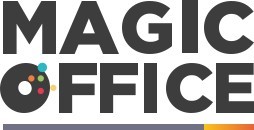
Understanding Change Management Tools
Exploring the Role of Change Management Tools
In today's fast-paced business environment, change management tools have become indispensable for companies aiming to streamline their processes and enhance operational efficiency. These tools are designed to help organizations navigate the complexities of change, ensuring that transitions are smooth and risks are minimized.
Change management tools offer a structured approach to managing changes within an organization. They provide a platform for planning, implementing, and monitoring change processes, making it easier for companies to adapt to new challenges and opportunities. By utilizing these tools, businesses can improve their workflows, enhance safety management, and ensure compliance with industry standards.
Key Components of Effective Change Management Tools
- Risk Assessment: Identifying potential risks associated with changes and developing strategies to mitigate them.
- Real-Time Monitoring: Keeping track of change processes in real time to ensure timely interventions when necessary.
- Frontline MOC: Managing operational risk and ensuring safety through effective management of change (MOC) processes.
- Compliance Management: Ensuring that all changes adhere to regulatory requirements and industry standards.
For companies in the UK, understanding the intricacies of change management tools is crucial for maintaining a competitive edge. These tools not only facilitate the management of change requests but also provide insights into best practices for enhancing business efficiency. By leveraging the right management software, organizations can optimize their change processes and achieve their strategic objectives.
For more insights on how to enhance efficiency with a well-structured filing system, you can explore this resource.
Benefits of Implementing Change Management Software
Maximizing Business Efficiency Through Strategic Software
Implementing change management software can significantly elevate the efficiency and effectiveness of management processes within UK companies. By carefully selecting and utilizing these tools, businesses can effectively manage the complex dynamics of operational risk, compliance, and frontline MOC (Management of Change) processes. Managing change within an organization is often accompanied by a myriad of challenges. However, having the right software can address many of these and offer a structured platform to initiate and track change requests. The integration of real-time risk assessment and safety management within the software aids in maintaining health safety standards while simplifying decision-making processes. Here are some key benefits of incorporating change management software into your business:- Enhanced Workflow Management: Efficiently manage workflows and processes to ensure smooth transitions and minimize disruptions.
- Improved Risk Assessment: Automatically assess potential risks to safety and operations, allowing for timely interventions.
- Increased Compliance: Maintain up-to-date compliance with industry regulations by leveraging the platform's built-in compliance features.
- Efficient Process Tracking: Monitor changes in real time, ensuring that each step of the management change is documented and tracked accurately.
- Streamlined Communication: Enhance frontline MOC transparency and communication, ensuring all stakeholders are informed and engaged throughout the process.
Challenges Faced by UK Companies in Change Management
Overcoming Hurdles in UK Change Management
UK companies often encounter several challenges when implementing change management processes. Navigating these obstacles effectively is crucial for enhancing efficiency and ensuring a smooth transition for all stakeholders involved. Firstly, the integration of change management software can be a significant hurdle. Many organizations struggle with selecting the right platform that aligns with their operational risk and management change needs, especially given the vast options available in the market. Decision-makers need to evaluate different management tools, focusing on those that offer comprehensive features such as process workflows, compliance features, and real-time risk assessment capabilities. A free trial or a request demo can provide valuable insights into the suitability of a platform before a full-scale implementation. Another common challenge is ensuring the safety of ongoing processes during changes. MOC (Management of Change) software plays a pivotal role in maintaining health safety standards and operational integrity. Companies must prioritize safety management to prevent any detrimental impacts on frontline MOC activities. Pricing concerns also contribute to implementation difficulties. Finding a cost-effective change software solution that does not compromise on essential features can be demanding. However, the long-term gains from improved efficiency often outweigh the initial costs. Careful evaluation of pricing models and service agreements is necessary to select the best management process tools. Additionally, resistance to change can pose a significant challenge. Change management is not merely about adopting new tools or workflows; it's about encouraging a mindset shift within the organization. Engaging employees through a well-structured plan and offering continuous support can mitigate resistance and enhance compliance. Change requests and management processes must be streamlined and clear. Access to the best tools is not enough unless employees are adequately trained and supported. Ensuring that all team members are comfortable with the transition will help in achieving seamless management. To read more about enhancing business efficiency through change management tools, you can explore this article for detailed insights.Key Features to Look for in Change Management Software
Identifying Crucial Features for Effective Change Management
When selecting the best change management software for your company, it's important to consider specific features that not only support the change processes but also enhance the efficiency of your organization's operational risk management.
Here are some key features to prioritize:
- Comprehensive Risk Assessment: The software should facilitate real-time risk assessment to accurately identify potential hazards and minimize operational risks.
- Robust Workflow Management: Ensure that the platform offers customizable workflows to streamline processes and accommodate change requests effectively.
- Flexible Process Integration: Look for tools that integrate seamlessly with existing management processes and safety management systems.
- Compliance and Safety Monitoring: It is crucial that the software helps maintain compliance with health and safety regulations, keeping in line with industry standards.
- Intuitive User Interface: The platform should provide an easy-to-use interface, allowing all users, including the frontline MOC, to access and utilize the software efficiently without extensive training.
- Real-Time Collaboration and Communication: Enabling stakeholders to collaborate in real time enhances communication and ensures that all involved are kept up to date on developments.
- Scalability and Customization: Choose a solution that grows with your business needs, offering customizable features to adapt to the unique requirements of your company.
Considering these key features can significantly help streamline the management change process, ensuring your company remains competitive and compliant in an ever-evolving business environment.
Case Studies: Successful Change Management in UK Companies
Success Stories: Effective Change Management in Action
In the dynamic landscape of UK businesses, several organizations have turned to change management tools and software to streamline their processes and achieve operational efficiency. Here, we explore some successful case studies that highlight the tangible benefits and positive transformations brought by these tools. One prominent example involves a major UK retailer that faced significant challenges in managing operational risk and maintaining compliance with health and safety regulations. The deployment of a comprehensive change management platform enabled the company to simulate potential changes through frontline MOC (Management of Change) software, facilitating thorough risk assessment and enhancing safety management protocols. By automating change requests and executing well-structured workflows, the business saw a considerable reduction in compliance-related risks, ensuring smoother operations. Another instance is seen within a prominent financial services organization confronting rapid changes in regulatory requirements. By adopting robust change management software, this company optimised its management processes, allowing real-time tracking of change requests and immediate access to critical information. This approach minimized disruptions and improved the firm's ability to implement changes efficiently. Additionally, a manufacturing company struggled with frequent process adjustments due to rapid market changes. Leveraging a management platform that offered a free trial, the firm successfully integrated change processes into existing workflows. By facilitating easy collaboration among departments, the software helped in assessing the impact of changes, thus minimizing risks and optimizing resource allocation. These case studies underscore the potential of management software in resolving core challenges such as risk mitigation, process optimization, and regulatory compliance. As more UK businesses embrace these innovative tools, the path towards streamlined and efficient operations becomes increasingly attainable.Future Trends in Change Management for UK Businesses
Emerging Technologies and Their Impact
As UK companies continue to evolve, the integration of emerging technologies in change management is becoming increasingly significant. Technologies such as artificial intelligence and machine learning are being leveraged to streamline management processes, enhance risk assessment, and improve real-time decision-making. These tools help in predicting potential challenges and automating routine tasks, thus allowing managers to focus on strategic planning and execution.
Increased Focus on Compliance and Safety
With the growing emphasis on health and safety, change management software is adapting to ensure compliance with regulatory standards. This includes features that facilitate safety management and operational risk assessments. Companies are now prioritizing platforms that offer comprehensive compliance tools, enabling them to manage changes effectively while maintaining safety standards.
Customization and Flexibility in Software Solutions
The demand for customizable change management software is on the rise. Businesses are seeking solutions that can be tailored to their specific workflows and processes. This flexibility allows for better alignment with organizational goals and enhances the overall efficiency of management change initiatives. Many providers now offer free trials and demos, allowing companies to explore the best fit for their needs before committing to a service.
Integration with Other Business Tools
Future trends indicate a move towards more integrated platforms that combine change management with other business tools. This integration facilitates seamless workflows and enhances the accessibility of information across different departments. By consolidating various management tools, companies can improve their change processes and reduce the complexity of managing multiple systems.
Focus on User Experience
As the demand for change management software grows, there is an increasing focus on user experience. Companies are looking for intuitive interfaces that offer easy access to features and functionalities. This focus on user-centric design helps in minimizing the learning curve and ensures that frontline MOC (Management of Change) processes are executed smoothly.













